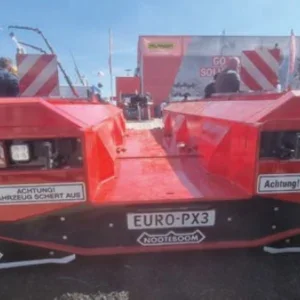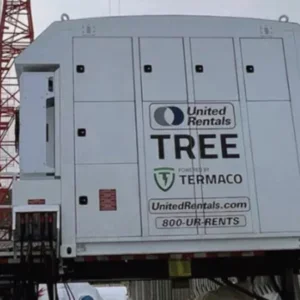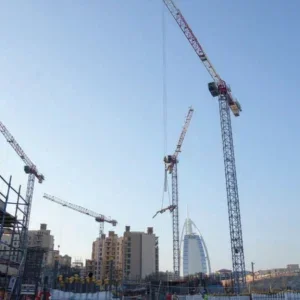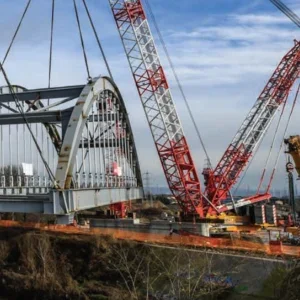Offshore cranes come in three varieties – large, huge and absolutely enormous. Just two vessels in the world – Hereema’s Thialf and Saipem’s S7000 – are each fitted with a pair of the huge variety, each crane able to lift up to 7,000t. In theory each of these vessels could lift 14,000t when in dual-crane mode. In fact, the world record heavy lift is a little less than this.
There are probably less than 15 floating cranes worldwide, able to lift more than 1,500t. In the top range, really heavy lift cranes fitted on semi-submersibles, usually referred to as semi-subs, there are as few as five vessels.
On the other hand, there are much smaller cranes. These come in a variety of guises including shearlegs, crawler cranes – both mobile on the deck and tied down – pedestal cranes and a variety of rotating cranes built into the vessel. A-frames and other handling devices carry out a lot of lifting tasks too.
All of these are on floating vessels, which are subject to movement according to the environmental forces and especially sea states.
“One should not forget the cranes on offshore production platforms,” says Hugh Williams, chief executive of the International Marine Contractors Association (IMCA). “These are required mostly to lift supplies and equipment on and off the platform,” he adds.
These are generally pedestal cranes. On a fixed platform, the crane drivers do not have to worry about vessel motion, but they do have to consider the motion of the supply vessel that they lift from or to. Of course, says Williams, some offshore production platforms are floating where, again, vessel motion plays a part in any lifting they do.
Williams says there are three main areas of concern when lifting offshore:
5 ï„·Motion
5 ï„·Stability
5 ï„·Space
Motion, he says, is the one that is most apparent. Ships are subject to roll, pitch and heave motions, in other words, movements in all directions depending on the sea state.
If a vessel is not static, which it never is at sea, a 100t load can become 95t or 105t because of the dynamic influence on the crane. In this case, before a load can be lifted the extra 5t has to be accounted for. This is called the dynamic application factor.
The wind speed also plays a part. Currents and tides can whip the sea into a variety of shapes and sizes but the weather alone can cause problems. A ship is subject to lateral movement in high winds which, coupled with the vessel roll, pitch, and heave, due to the swell and wind waves, can make lifting impossible.
Sensors detect the wind speed and vessel motions and from this information decisions can be made. When the conditions reach a certain point, lifting is postponed.
Williams says that in the winter months, depending on the vessel, up to 20% down time can be endured with conditions simply too hazardous to continue working.
Heave compensated cranes can sense movement and sophisticated systems can compensate for the sea state. These are becoming increasingly common in smaller cranes. However, even these modern lifters have a limit.
Williams remarked on the dangers that a swinging load can incur to personnel, plant and equipment. The extent to which this happens is controlled by winch (tugger) restraint.
In addition, the off-lead angle is critical. This is the sidewards angle by which the main crane wires leave the sheaves at the top of the jib. A crane can handle a slight deviation off straight but once this happens the load is no longer directed in line with the crane jib. This can result in damaged wire or even a broken jib, so a maximum off-lead angle is stipulated.
The size of the vessel upon which the crane is working plays a major part in offshore lifting. If you place a small rowing boat on high seas it is likely to capsize. On a cruise liner the movement is not so apparent.
The same issue applies in relation to the various types and sizes of marine construction vessels and factors such as these have to be considered when determining the safety of offshore lifting. It involves the essence of stability.
Stability is crucial to execute successful and safe offshore lifts. If all the cargo is on one side of the boat then it will list in that direction. If the crane is working over one side of the vessel then when it takes the load it will roll towards the crane jib head.
To counter this, water ballast is used. On heavy lifts this is a gradual process whereby the crane takes, say, 20% of the load and the counteracting 20% of ballast is pumped into the ballast tanks. This continues until the load is compensated completely.
This works effectively like a set of scales with the water in the ballast on one side of the ship weighing the same as the load itself on the other. But it is more complex than that because the fundamental stability of the vessel has also to be taken into account.
Space is at a premium on board a working vessel. Offshore cranes have to operate on congested decks with people moving far closer to the machine than they would normally be permitted to do on land. This gives operators even less margin for error than they would have on a construction site, for example, together with the potential problems provided by dynamic motion.
This would be hair-raising enough, but offshore cranes are often required to lift people. Getting the calculations wrong and letting a load drift into the side of the ship is one thing, doing so with a personnel transfer basket full of people is quite another. That’s why the industry, which includes IMCA, has developed guidelines for the design, equipment, maintenance, inspection, operator competence, and procedures for lifting and why the subject of offshore cranes is so important.






